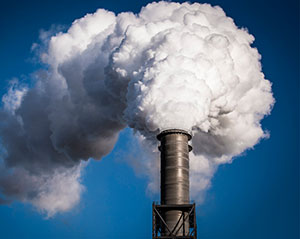用語集
総最終エネルギー消費量
>最終消費は、エネルギー変換部門に関連する投入および損失を除く、最終消費者のエネルギー需要を測定する。
総一次エネルギー消費量
一次消費量は、変換プロセス内のすべての損失と自家消費量を含む、国の総エネルギー消費量を測定します。
最終消費における電力のシェア
これは、電力の最終消費量とエネルギー全体の最終消費量の比率に対応します。ただし、エネルギー変換セクターに関連する投入と損失は除きます。
一次エネルギー消費における化石燃料の割合
これは、化石燃料(石炭、石油、ガス)の一次エネルギー消費量と一次総消費量の比に相当します。
電力最終消費
最終電力消費量は、エネルギー変換部門に関連する投入および損失を除く、最終消費者の電力需要を測定します。
総発電容量
設備容量:民間および公共の公益事業および自動車メーカーから。コージェネレーションと燃料電池を含みます。
総発電量
発電:民間および公共の公益事業者および自動車メーカーからの総発電量が含まれる。それはコージェネレーションと燃料電池を含みます。
一次エネルギー消費に占める再生可能エネルギーの割合
変換入力または最終需要部門における再生可能エネルギー源の一次消費量が、総一次エネルギー需要量に占める割合。
最終エネルギー消費における再生可能エネルギーのシェア
これは、再生可能エネルギーの最終エネルギー消費量とエネルギー全体の最終消費量との比率に対応します。ただし、エネルギー変換セクターに関連する投入と損失を除きます。
発電における再生可能エネルギーのシェア
発電における再生可能エネルギーの割合は、再生可能エネルギー源(風力、太陽光、大小の水力、バイオマス、地熱など)から生成される電力と総発電量の比率に対応し、 パーセンテージ(%)で表されます。
総CO2排出量(工業プロセスを含む)
CO2排出量は、化石燃料の燃焼および工業プロセスからの人為的排出量です。農業部門からのCO2排出、土地利用、土地利用の変化、林業、畜産は含まれていません。バイオマス燃焼はカーボンニュートラルであると考えられています。
発電のCO2原単位
発電のCO2強度は、1キロワット時の発電に関連する人為的なCO2排出量を表します。キロワット時あたりのCO2のグラム数(gCO2 / kWh)で表されます。
GDPに対するCO2の原単位
GDPに対するCO2原単位は、1単位の国内総生産(GDP)の生成に関連する化石燃料燃焼からの人為的なCO2排出量に対応します。この指標は、購買力平価(kgCO2/US$15ppp)で米ドルで測定されます。
一人当たりのCO2原単位
一人当たりのCO2原単位は、人口1人当たりの化石燃料の燃焼による人為起源の総CO2排出量を測定します。この指標は、一人当たりCO2トン(tCO2 /cap)で表されます。
EnerFutureは、2050年までのエネルギー予測を提供します。当社のサービスは、エネルギー需要、価格、およびGHG排出量の将来について明確な洞察を提供します。
詳しくは


